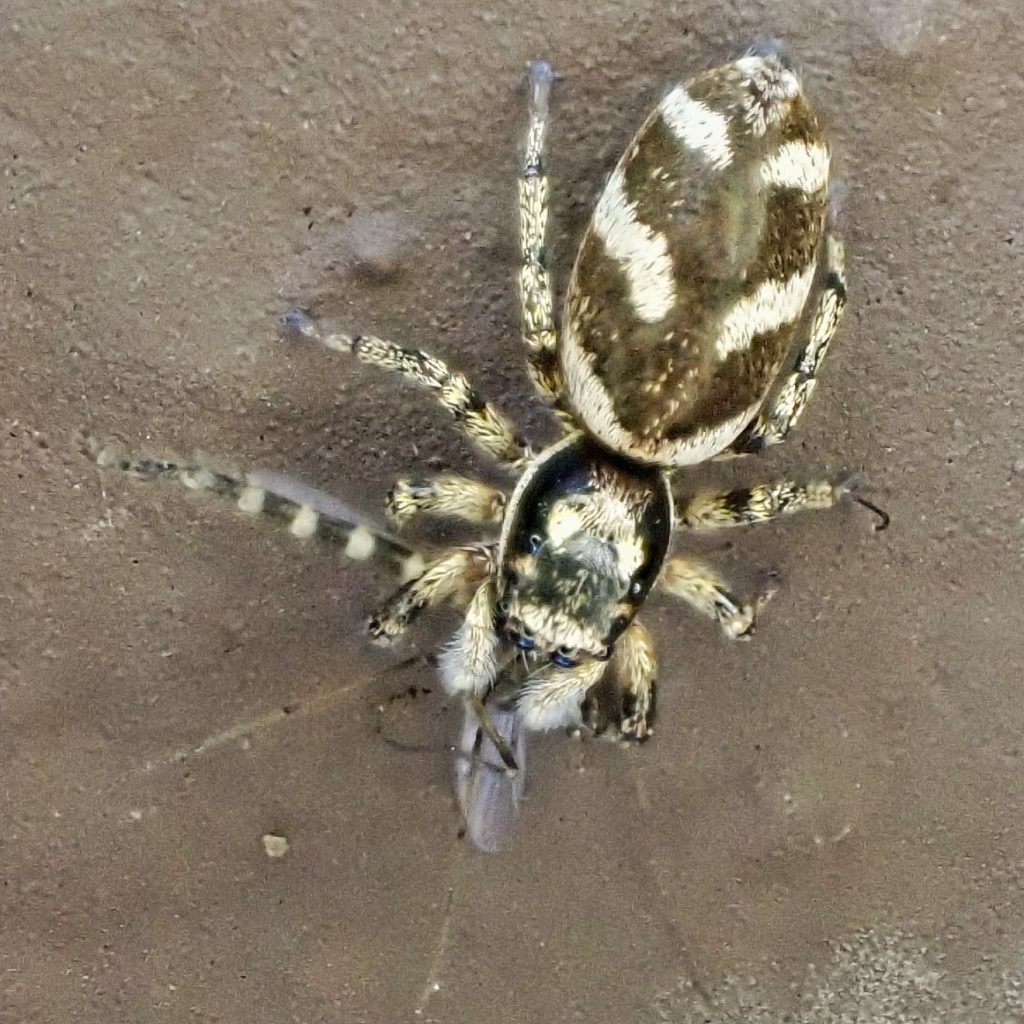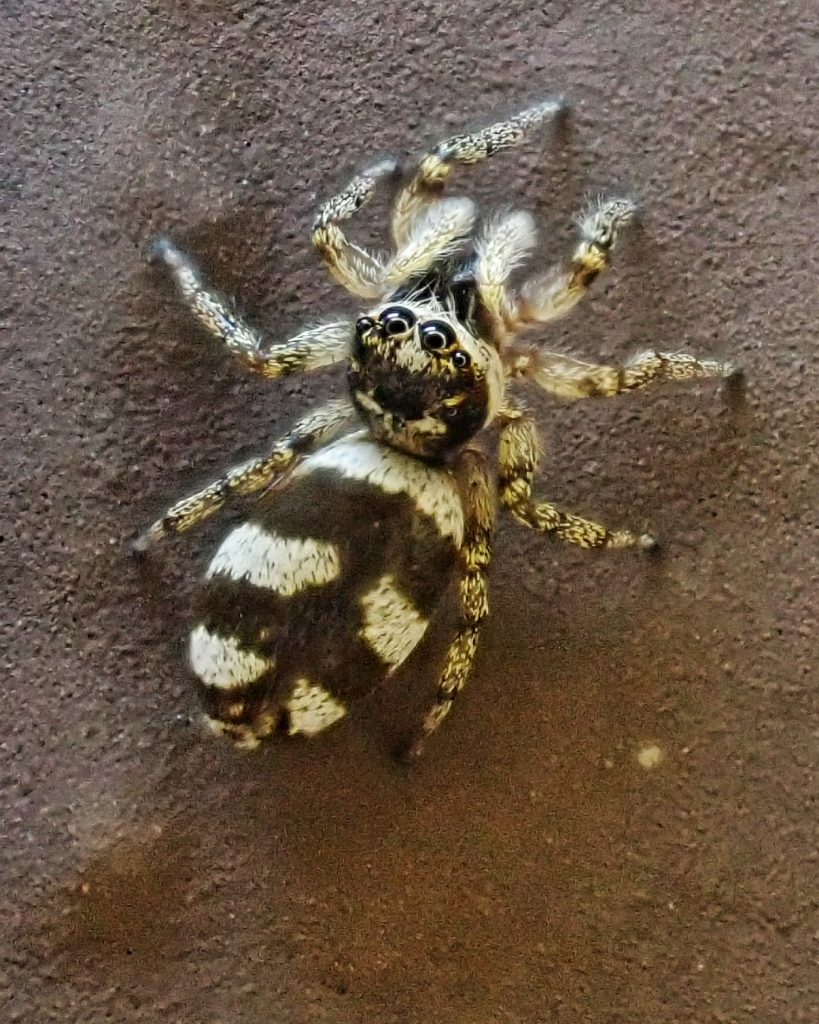
Zebra jumpers are probably the most commonly seen jumping spider (family Salticidae) in our region, although their size means we all probably miss more of them than we see. They are not a native species, but have been reported since very early in the colonization of North America, and like many introduced species they are at least somewhat synanthropic, being found most commonly on and around man made structures.
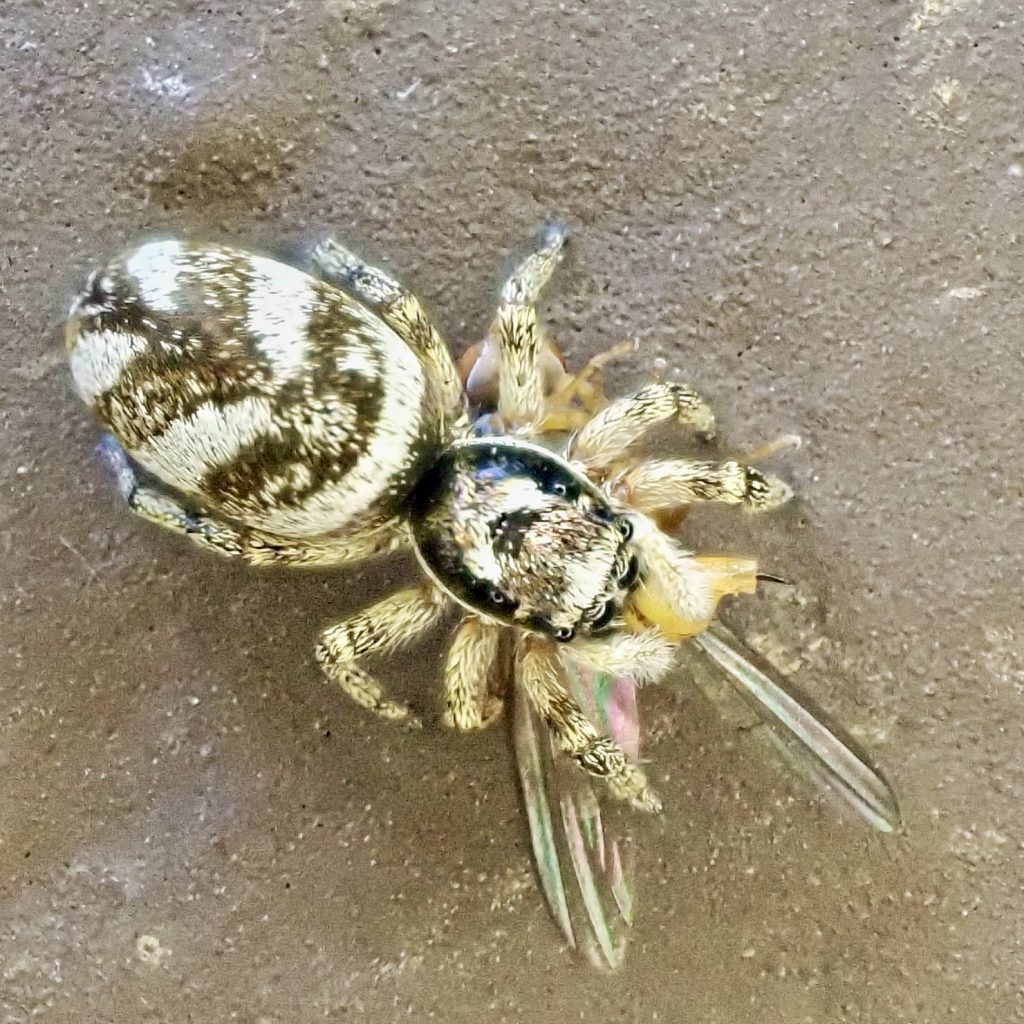
Like all salticids they are visual predators, and they stalk the vertical surfaces they prefer searching for prey that has landed there, or even just bugs flying by. Either way their attack is the same- a leap into space while tethered to the substrate by a minute bit of webbing, so that regardless of whether they’re successful or not, they can just reel themselves back to their point of departure. Like most jumping spiders they seem quite fearless, and will not only tolerate a close approach (although they often spook when the LED light comes on on my camera), but will engage with the observer, following an extended finger and even hopping up on it.
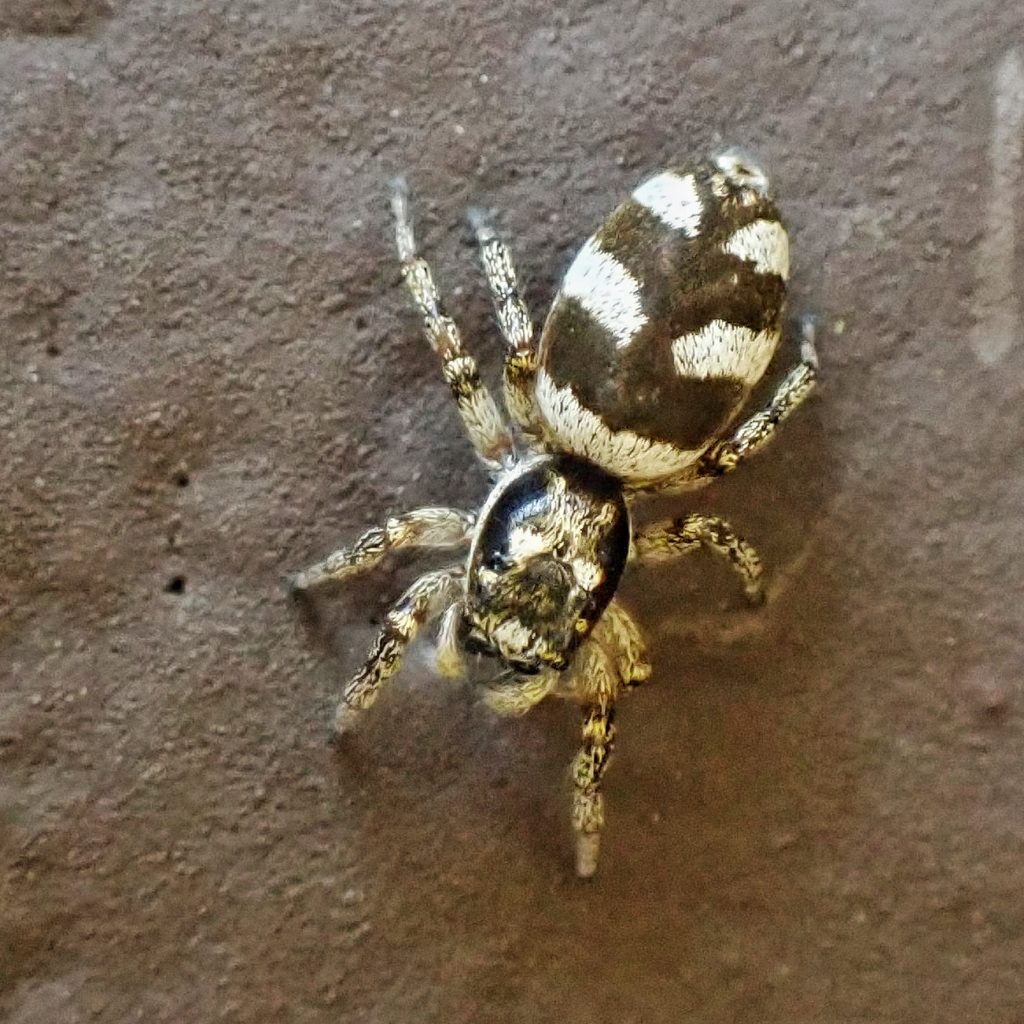
A couple of things that I, as a recreational naturalist, really appreciate about Salticus scenicus, is that their roaming about on the vertical surfaces of man made structures makes them very findable, accessible, and observable, and because their color and pattern not only remain the same through all of their molts, but are unique among the region’s similarly shaped spiders, so that I always know, without having to find mature specimens and resort to microscopy, that what I’m looking at is indeed a zebra jumper.
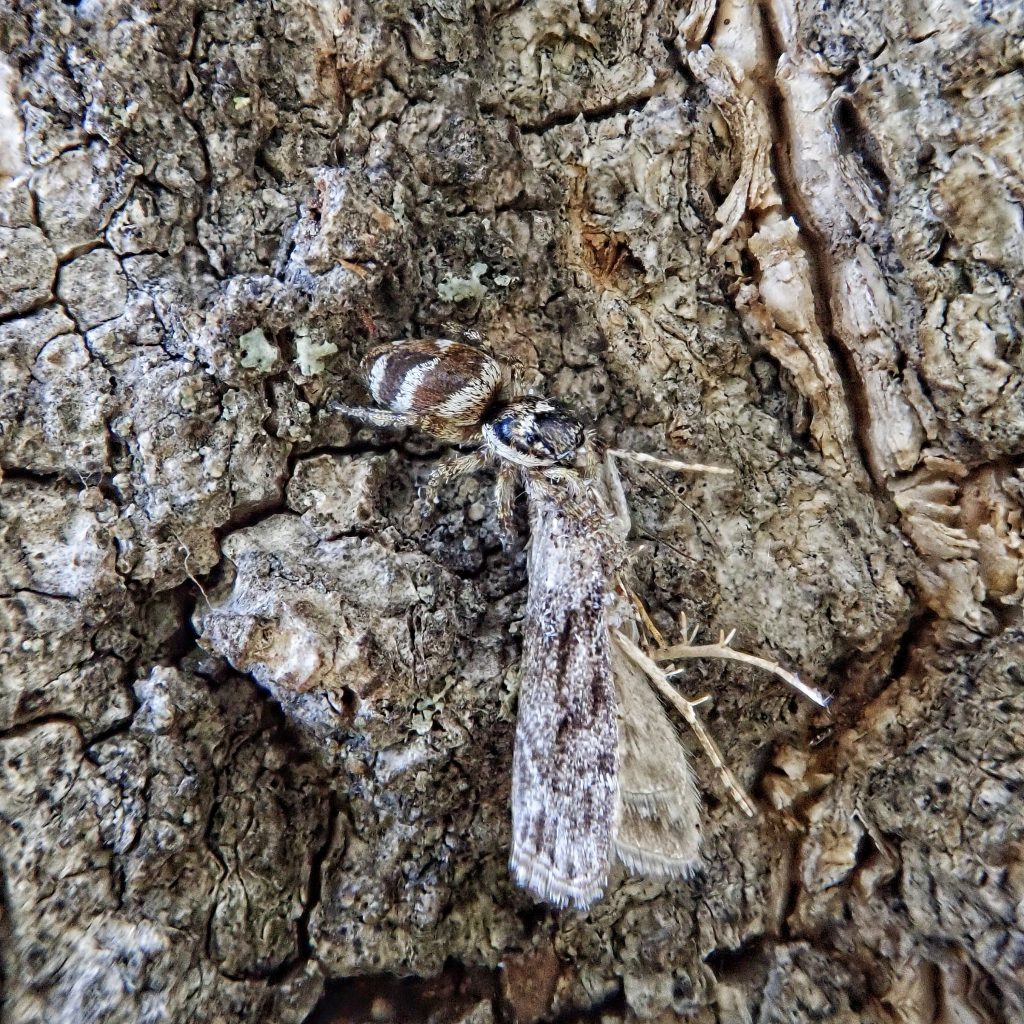
There is an old cemetery near my home, and as the closest thing to a ‘natural area’ in our neighborhood I often walk there, both for exercise and looking for bugs, and if I look closely I can almost always find a zebra jumper somewhere, either on the trees or on the block building in the center of the cemetery. And they were rather spectacular during the record breaking, heat dome phenomenon in late June of 2021. I don’t know if it was just the seasonal timing, or the excessive heat itself, but large numbers of moths, lacewings, and chironomid midges and other small flies, were emerging at that time, and landing on vertical surfaces, and the zebra jumpers were feasting on them. Though I wasn’t lucky enough to see a capture, I would estimate that I saw at least a few dozen Salticus scenicus with fresh prey, usually on the shaded side of whatever surface they were on, during that heat way. And then, when the high temps dropped back into the 80s, it was back to finding one here or there.
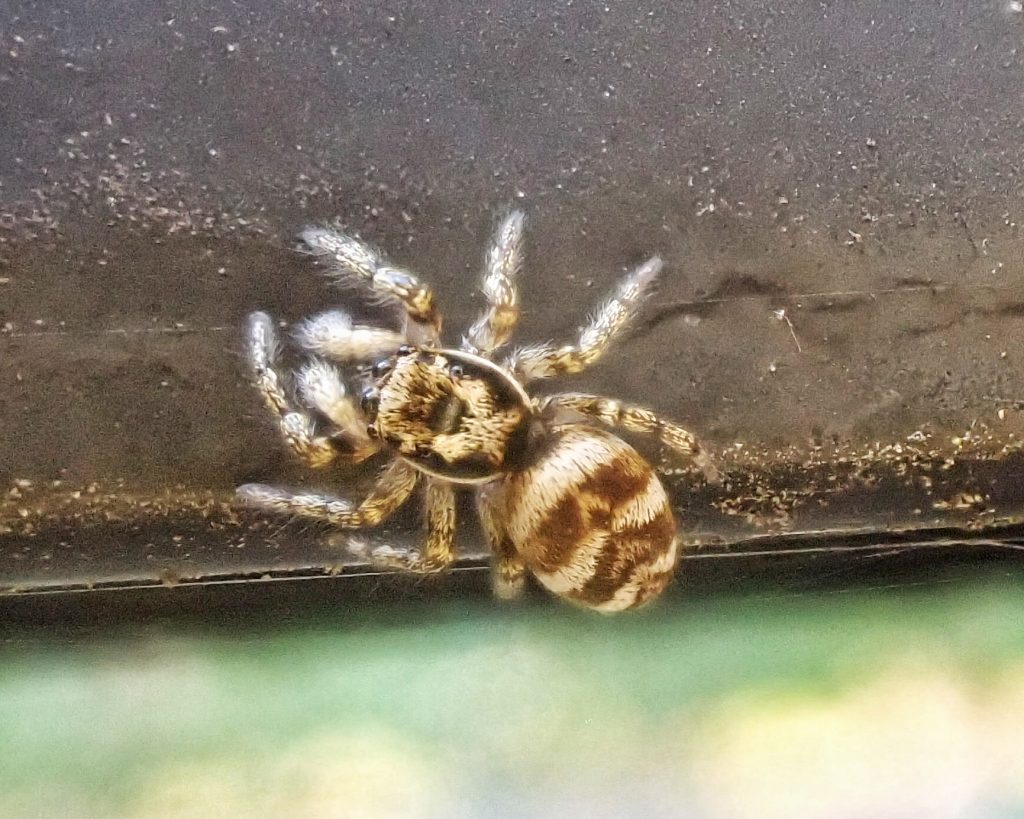
Description– “Zebras spiders are small, ranging from 4-7 mm in size. Females are larger than males and usually range from 4-6.5 mm while males range from 4-5.5 mm. They have 3-4 white stripes on their abdomens; those at the base of the abdomen are complete, while those in the middle are narrow or broken. The abdomen is longer and narrower than the cephalothorax. Males have a more elaborate striping pattern on their legs. In males, the chelicerae are larger than in females and extend almost horizontally. (Foelix, 2011; Milne and Milne, 1980; Robinson, 2005; Ubick, et al., 2005; Weber, 2003)
Similar species– No other salticids in our region have the broken, angled white stripes on the abdomen; Sergiolus spp. have only 3 much thinner white lines and none of them are angled, and they are a narrower spider.
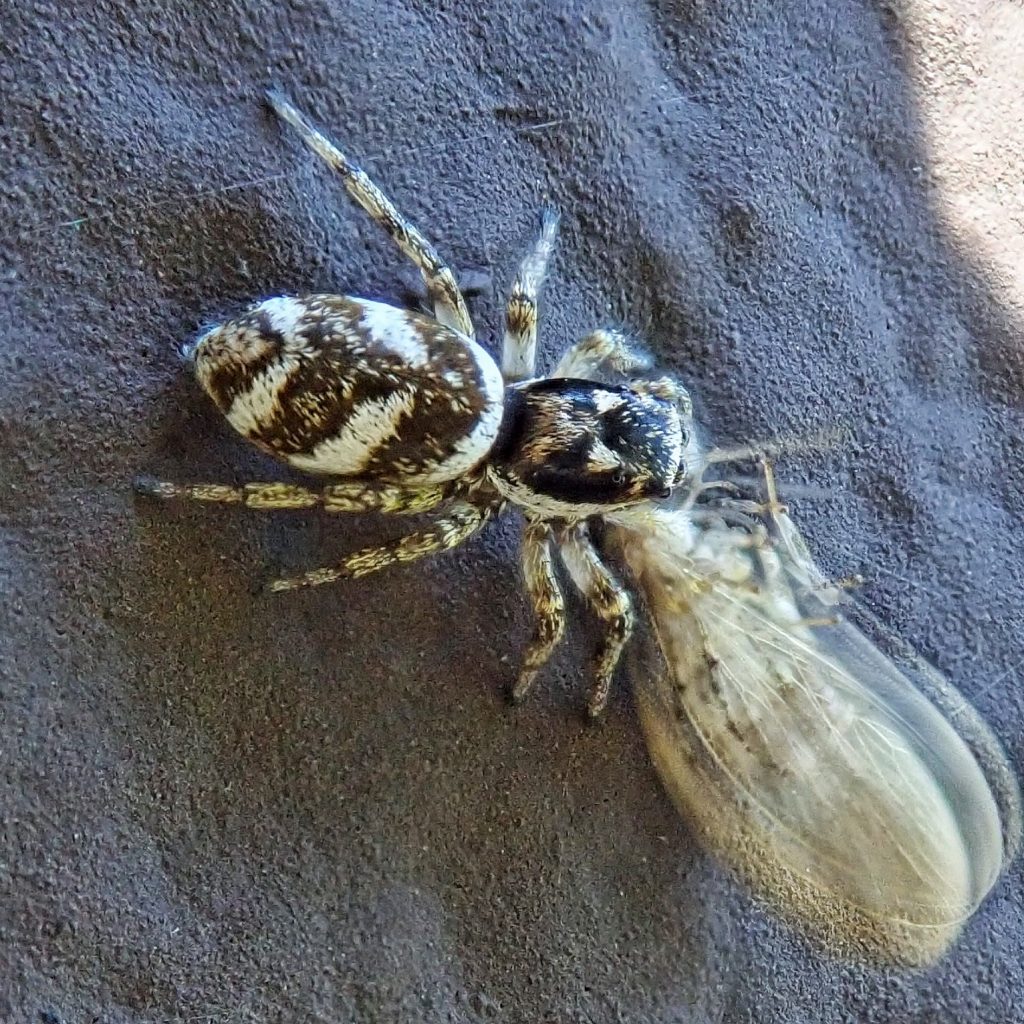
Habitat– “The Common Zebra spider is widespread around houses and other buildings where it hunts on walls, fences, rockeries and similar places during the day. It is particularly noticeable on vertical surfaces warmed by direct sunlight where its jerky movements often betray it. Crisscross lines of silk over the substrate are another clue to its presence. At night and in dull weather it retreats into a silken cell, built in a hole or crevice. It can, however, be found away from the built environment on fence posts, rocks and the bark of trees.” https://britishspiders.org.uk/sites/default/files/2020-08/Salticus_online.pdf
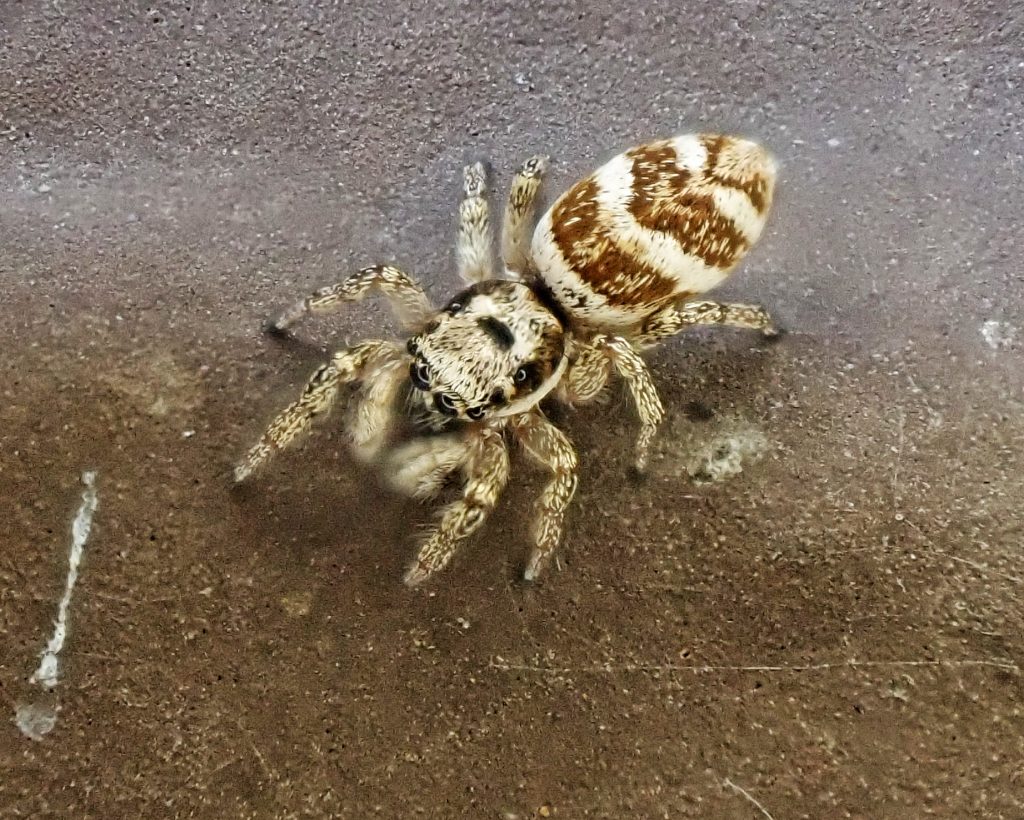
Range-“Zebra spiders have a Holarctic distribution. They are native to Europe, where they are found throughout the continent, but are also found throughout North America north of Mexico to southern Canada, where it is believed that they are an introduced species.” ADW: Salticus scenicus: INFORMATION; found region wide in the PNW near areas of human habitation, but most common west of the Cascades.
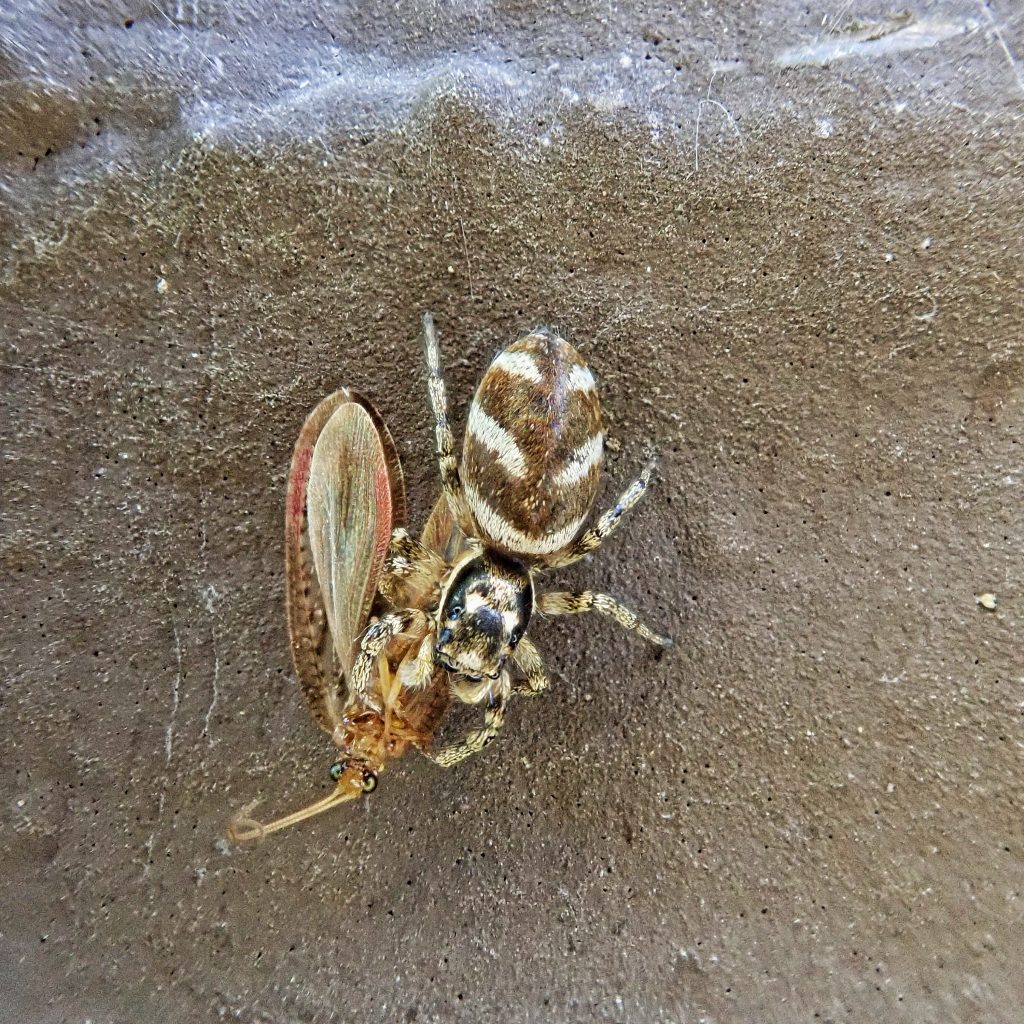
Eats– “Zebra spiders are active predators that feed primarily on insects, and can catch prey that is much larger than their body size. Their primary prey are dipterans, which includes mosquitos and flies. They do, however, also prey on small spiders, and will even eat members of their own species. When cannibalism occurs, the smaller spider is always the victim. Zebra spiders use their excellent vision to locate their prey. (Foelix, 2011; Nieuwenhuys, 2009; Okuyama, 2007) ADW: Salticus scenicus: INFORMATION
Eaten by– Spider wasps (family Pompilidae), and mantises, as well as other insectivores of all classes.
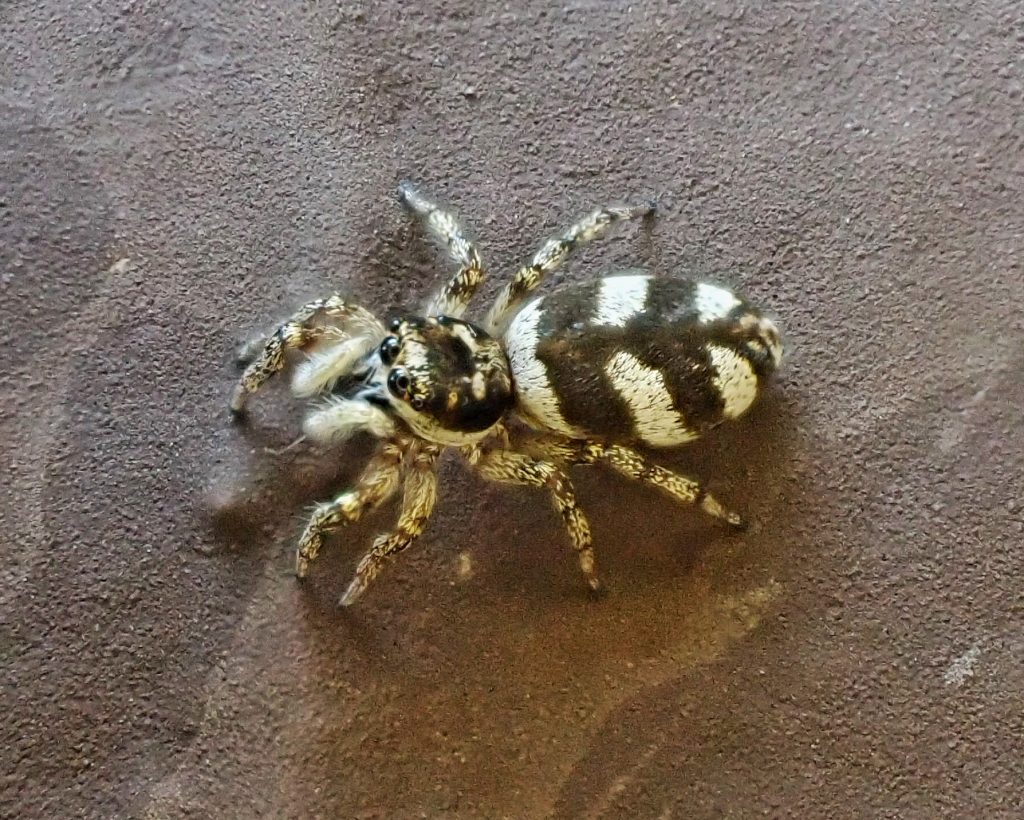
Life cycle– “Mating usually occurs in late spring or early summer. During courtship the male performs a jerky, zig–zagging dance in front of the female, extending and waving his forelegs and unwieldy chelicerae to grab her attention. After mating, the female retires to a sheltered site under stones or debris to spin a tangled retreat in which she will lay between 15 and 25 eggs protected within a silk egg- sac. The female guards the eggs until they hatch three or four weeks later. She cares for the hatched spiderlings (baby spiders) until they moult, and then abandons them to make their own way in the world. Between emerging from the egg-sac and reaching adulthood, the growing spiders shed their skins (moult) up to 9 or 10 times. After their penultimate moult they overwinter as sub-adults, becoming adult the following spring.” https://britishspiders.org.uk/sites/default/files/2020-08/Salticus_online.pdf
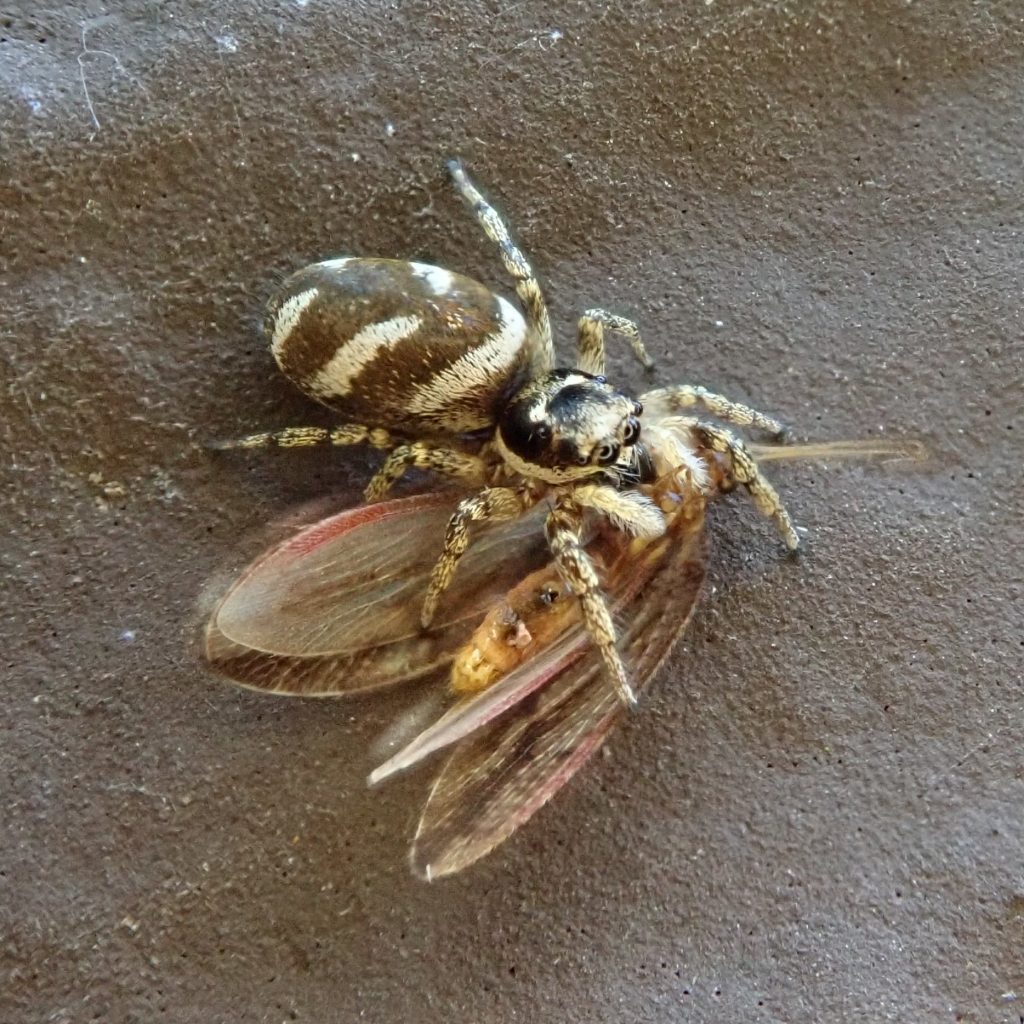
Adults active– Adult males are usually found from April to July, and females from March to October.
Etymology of names– Salticus is from the Latin word for ‘dancer’, and refers to the jumping ability of these spiders. It was also used as the root for the family Salticidae. The specific epithet scenicus is from the Greek word for ‘of the stage/theatrical’, and refers to the ‘theatrical’ black and white striping.
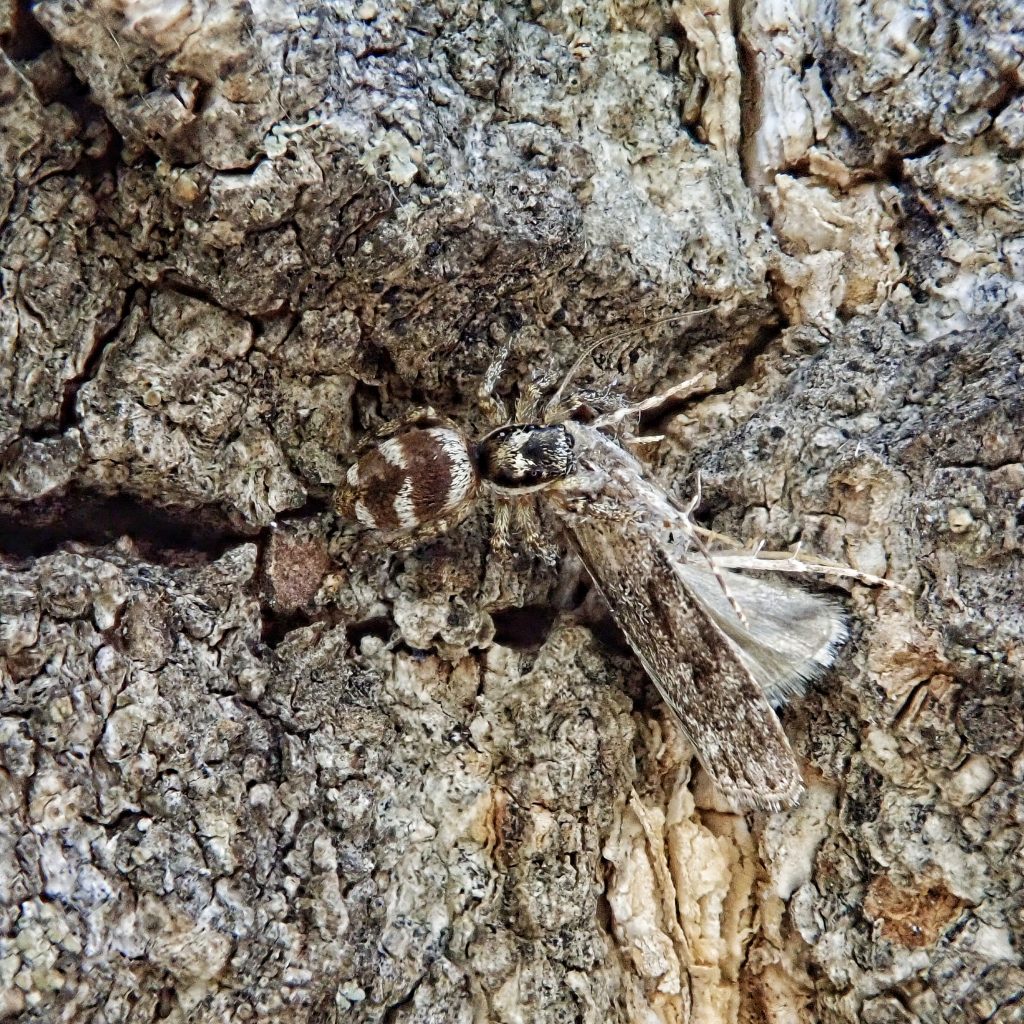
https://animaldiversity.org/accounts/Salticus_scenicus/
Species Salticus scenicus – Zebra Jumper – BugGuide.Net
https://britishspiders.org.uk/sites/default/files/2020-08/Salticus_online.pdf
Salticus scenicus | NatureSpot
